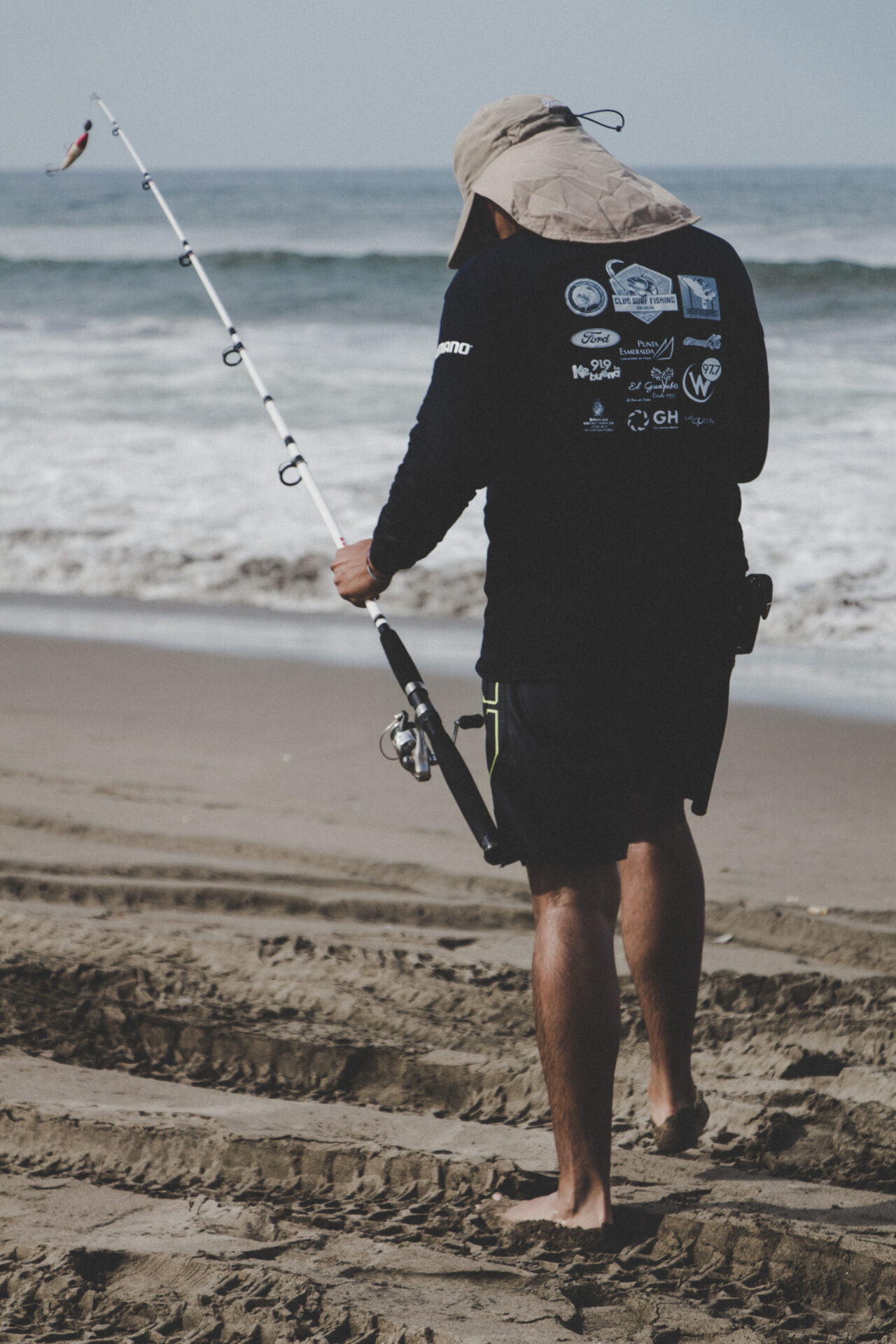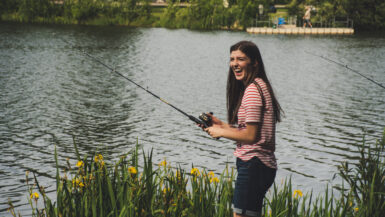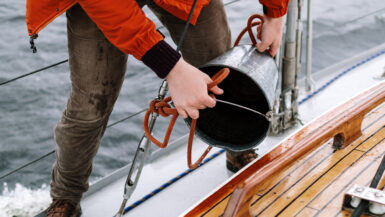Carp are some of the most popular freshwater game fish for anglers the world over, and catching them can be an incredibly rewarding experience. But to have the best chance of catching carp, anglers need to arm themselves with the right tackle and bait. This article takes a look at some of the best baits for catching carp from lakes, from boilies to worms and beyond.
Types of Carp
Carp are one of the most popular freshwater fish species and they can be found in many lakes across the United States. To be successful at catching carp in lakes, it is important to understand the different types of bait to use. Below are the best baits for catching carp in lakes:
Boilies
Boilies are ingredients that have been cooked, rolled, and then preservative-treated in a way to make them more appealing to carp. They come in a wide range of flavours such as cheese, fish, and sweet flavours such as banana or strawberry. Boilies are an easy bait to prepare and often the carp will bite into them quickly.
Groundbaits
Groundbaits are a mixture of ingredients that are ground up into small particles and then used to lure carp. It is a combination of coarse particles, fine particles, liquid attractors and other ingredients such as ground nuts and sweetcorn. Groundbaits can be used to target carp in a variety of different situations such as clear water, shallow water, or deep water.
Maggots
Maggots are a traditional bait for catching carp in lakes and they are a great choice for targeting larger carp. Maggots are small larvae that are attracted to smell and can be used as a single bait or as part of a combination of baits. Maggots can be bought in bulk in fishing tackle shops, or can be found in pondweed.
Sweetcorn
Sweetcorn is an inexpensive bait option for carp fishing in lakes. Sweetcorn can be used as a single bait or as part of a combination of baits. It is an attractive bait for carp due to its sweet taste, and can help to attract large carp in a lake.
Liver
Liver is another popular bait for carp fishing in lakes. Liver can be used either as a single bait or as part of a combination of baits and is a great choice for targeting larger carp. It is a good bait because of its strong smell and taste and will often attract carp in large numbers.
Paste
Paste is a great choice for carp fishing in lakes and is a popular bait for targeting larger carp. Paste is made up of ground up fish and other ingredients such as sweetcorn. It has a strong smell and taste, which often attracts carp in large numbers.
By understanding the different types of baits available, it can help anglers to be more successful when fishing for carp in lakes. All of these baits can be used to target carp of different sizes, and can be used in a variety of different situations. For best results, it is important to use the correct bait for the situation and the type of carp being targeted.
Water Conditions in Lakes
When it comes to catching carp in lakes, the water conditions play an important role in the success of that endeavor. The water temperature, clarity, and pH levels can have a major effect on the amount and quality of the carp found in the lake. Knowing the water conditions before fishing is a key factor in yielding a successful trip and getting a good catch.
Temperature Preference for Carp in Lakes
Carp can survive in a wide range of water temperatures, typically between 4 degrees and 30 degrees Celsius. Carp are cold-water species, so they are more likely to be found in waters that are colder than 20 degrees Celsius. During the summer months, carp will often seek out deeper waters where the temperature will be cooler. They also prefer some sort of vegetation in the water as it provides both shelter and food.
Effects of Water Clarity on Carp in Lakes
The clarity of the water in a lake can also be an important factor in the quantity of carp found in a given area. Carp prefer murky waters as they provide more cover and protection, whereas clearer waters offer less protection as more predators such as fish and birds can more easily spot them. In clearer waters, carp are more likely to stay close to the bottom where there is less visibility.
pH Levels in the Lake
The pH of the water can also be an important factor in the number of carp in a lake. Generally speaking, carp prefer slightly acidic water with a pH of 6.5 or lower. If the water in a lake has a higher pH level, it can put carp at a disadvantage as the higher pH level can make it more difficult for them to process their food.
By understanding the various water conditions that carp prefer in lakes, anglers have a better chance of catching more carp on their fishing trips. With the right water temperature, clarity, and pH levels, anglers can have a successful day of fishing for carp.
Common Carp Baits
In order to successfully catch carp from a lake, it is important to use bait that is attractive to carp. Common bait for carp includes worms, corn, and cheese, but there are also other useful baits that can help you land a fish. The following are some of the best baits for catching carp in lakes.
Fish-Flavored Bait
Fish-flavored bait works well for carp fishing because the flavor of the bait is familiar to the carp. Fish-flavored bait can be bought in many tackle stores and comes in a variety of flavors. These baits are a great choice for carp fishing in lakes because they have a strong scent and flavor that attracts carp.
Boilies
Boilies are a type of bait that is made from a mix of different ingredients that are formed into a ball. This type of bait is particularly good for catching carp in lakes because it has a strong scent that carp find attractive. Boilies can also be custom made to match the type of bait that carp in the lake prefer.
Crankbaits
Crankbaits are a type of hard-bodied fishing lures that are designed to mimic the movements of fish. These lures are especially effective for carp fishing in lakes because they can be used to mimic the movements of baitfish that carp feed on. Crankbaits are designed to wiggle and vibrate in the water, which draws the attention of the carp and makes them bite.
Power Baits
Power baits are a type of soft bait that are designed to float on the surface of the water. These baits are especially effective for carp fishing in lakes because they can be used to target carp that are feeding on the surface. Power baits come in a variety of shapes, sizes, and colors, allowing anglers to choose the bait that best suits their fishing style.
When choosing bait for carp fishing in lakes, it is important to choose baits that carp in the lake are familiar with. By using these tips and baits, anglers can increase their chances of landing a carp from a lake.
Special Baits for Carp
Live bait is a highly effective way to catch carp in freshwater lakes. Live bait is attractive to carp because of its natural aroma and movement. Popular live baits for carp include worms, maggots, waxworms, mealworms, crickets, grasshoppers, and crayfish. Careful consideration of the lake’s environment should be taken when choosing a live bait. Worms are a great option but can be hard to find in certain lakes. Maggots and mealworms are often more widely available.
Artificial Baits for Carp Fishing in Lakes
Artificial baits, such as soft plastic baits, can also be effective for catching carp in lakes. Soft plastics can closely mimic the natural movements of prey and are therefore attractive to hungry carp. Popular artificial baits include grubs, worms, jigs, and crankbaits. These baits can be used to target carp in shallow or deep water and offer a wide variety of colors and styles to choose from.
Fishing with Groundbaits for Carp
Groundbaits, also known as feed baits, are a great way to attract carp to your fishing spot. Groundbaits are composed of a variety of ingredients such as cereal flakes, fishmeal, and attractants, and are designed to create an intense food source for carp. These baits can be used to attract carp to your fishing spot and can also be used to entice curious carp to take a closer look.
Using Boilies for Carp Fishing
Boilies are another type of bait often used for carp fishing. Boilies usually consist of a combination of fishmeal, wheat, oils, and other attractants mixed together and rolled into a ball. Boilies can be used to target carp in both shallow and deep water and can be cast over long distances. They can also be used to create a scent trail that carp can follow to your bait. Boilies are a highly effective way to target carp and can be found in a variety of colors, sizes, and flavors.
Using Boilies and Groundbaits Together
Finally, a popular technique for catching carp in lakes is to combine boilies and groundbaits together. This technique involves placing a number of small boilies around the perimeter of a lake and then sprinkling groundbaits around them. This creates an intense scent and food source that attracts carp. Boilies and groundbaits can also be used to target carp in certain areas of the lake.
Presentation and Location of Baits
In order to maximize your chance of catching carp in lakes, it is important to know where to place the baits. Generally, carp like to feed near the shoreline, so baits should be placed in shaded areas near the shore. Additionally, carp also like to feed in areas that have cover from vegetation, such as weeds and lily pads, so baits should be placed near these areas as well. In addition, carp are also drawn to deeper water where there is a higher concentration of food, so baits should also be placed in deeper areas of the lake.
Presentation of Baits for Carp Fishing
Once you have identified the right location for placing your baits, it is important to choose the right presentation. Carp are attracted to a variety of bait presentations, so it is important to experiment with different baits to determine what works best. A common presentation for catching carp is to use a running bait rig. This rig involves attaching a bait to a leader line and then casting it out into the lake. The bait should be placed near cover such as weeds or lily pads, as mentioned above. Additionally, the bait should be visible to the carp so that it will be more likely to attract them.
Types of Baits for Catch Carp
When it comes to choosing the right bait for catching carp, there are many options available. Some of the most popular baits include worms, fledglings, and maggots, as well as various kinds of corn. Additionally, carp are also attracted to bread, so bread crumbs can be used as well. It is important to experiment with different baits in order to determine which ones work best for your specific lake or river. Additionally, it is important to make sure that the bait is accessible to the carp, which means that it needs to be placed in the right location.
Tips for Effective Carp Bait Placement
When it comes to carp fishing, bait placement is key. It is important to choose the right location in order to maximize the chances of catching carp. Additionally, it is important to choose a variety of different baits in order to see which ones work best for your particular lake or river. Lastly, make sure that the bait is visible, as carp are more likely to be attracted to bait that they can see. By following these tips, you will be well on your way to catching carp in your favorite lake or river.
Lake Fishing Tips for Carp
Carp fishing can be a fun and rewarding experience. But to ensure you get the most out of it, it’s important to know which baits work best for catching carp in lakes. Common bait options for carp fishing in lakes include sweetcorn, bread, maggots, and boilies. Sweetcorn works best when used in small pieces, especially when used in combination with other baits. Bread is another great option, as its texture contributes to a successful catch. Maggots are great when used in rivers, whereas boilies are often used for carp fishing in large lakes. Additionally, adding smaller baits to larger baits can help attract more carp to the area. Be sure to give the carp a sufficient amount of time to make the bite, as carp tend to nibble on bait until they are ready to fully take it. The best way to ensure a successful fishing experience is to have patience, utilize the right baits, and be aware of the behavior of the carp in the lake you are fishing.





Leave a reply